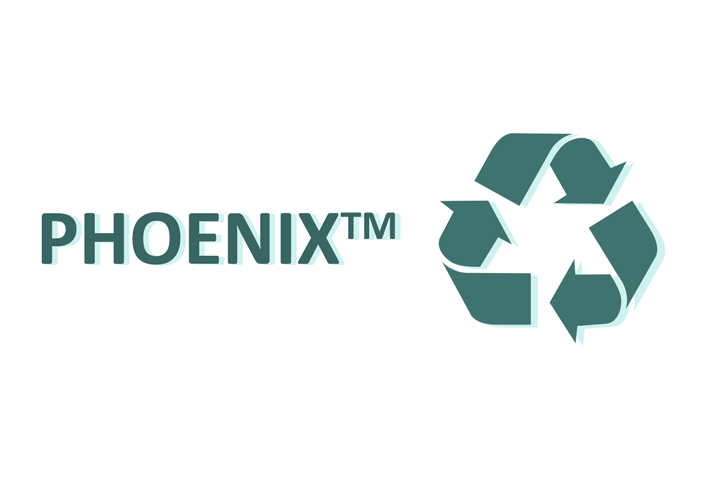- Home
- Blog
- Material & Life
- The recyclability of PHOENIX™ TPEs
The recyclability of PHOENIX™ TPEs
2021-09-07

Sustainability is the hottest topic among the industries, particularly in the plastic industry. Limited fossil fuel, global warming, and plastic wastes that accumulated on the ocean endanger many species urge many manufacturers to redefine their products to be more sustainable, to reduce single-use plastics. They have turned their eyes on PCR (post-consumer recycled) and PIR (post-industrial recycled) materials. By utilizing PCR or PIR will substantially reduce the environmental impact and prevent plastics from landfills. It also cut the carbon footprint and products with PCR or PIR contents are preferred by consumers.
Check our PHOENIX™ PIR Thermoplastic Elastomers
How do we recycle PHOENIX™ TPEs?
Recycle PHOENIX™ TPEs is easy because it is 100% recyclable. The sprue, runner, and wastes generated at the stage of production can be ground and added into the molding process immediately.
Recycle consumer products made of PHOENIX™ TPEs is more complicated and complex. TPEs are mostly used for two components(2K) products, it is difficult to separate TPEs from products. If the TPEs bond with olefin-based plastic, it is generally compatible with olefin plastic if get recycled with PP or PE. If TPEs bond with the engineering plastics such as ABS, PC, PA, and more, this is a tough task to recycle TPEs.
Will it impact our products if using recycled TPEs?
Every time the material is melted, it will have chain scission and cause a reduction of molecular weight, which can't be reversed or recovered.
Molecular weight plays a role in processing and physical properties like melt flow (increased), heat resistance (decreased), compression set (decreased), tensile and tear strength (decreased) if the molecular weight decreased.
Therefore, by putting more ground material into virgin material, it will affect more the physical properties.
According to UL 746D guideline, it is said that fabricated parts shall not be molded from a polymeric material that contains more than 25% regrind by weight, that has been dry blended by the molder with the same grade of virgin material unless it is thoroughly evaluated that the performance of specific part is acceptable.
It is suggested to add secondary PHOENIX™ TPEs into primary TPEs by a maximum of 15% but sometimes it may go up to 50%. Experiment whether 50% dosage will have a significant impact on material properties or not. If yes, then reduce the percentage. PHOENIX™ TPEs can be recycled around 3-5 times but it needs to decrease the dosing percentage gradually after every cycle.
Meanwhile, please regrind the sprue and runner immediately after processing and store with care to avoid contamination of dust.
Check our PHOENIX™ PIR Thermoplastic Elastomers
How do we recycle PHOENIX™ TPEs?
Recycle PHOENIX™ TPEs is easy because it is 100% recyclable. The sprue, runner, and wastes generated at the stage of production can be ground and added into the molding process immediately.
Recycle consumer products made of PHOENIX™ TPEs is more complicated and complex. TPEs are mostly used for two components(2K) products, it is difficult to separate TPEs from products. If the TPEs bond with olefin-based plastic, it is generally compatible with olefin plastic if get recycled with PP or PE. If TPEs bond with the engineering plastics such as ABS, PC, PA, and more, this is a tough task to recycle TPEs.
Will it impact our products if using recycled TPEs?
Every time the material is melted, it will have chain scission and cause a reduction of molecular weight, which can't be reversed or recovered.
Molecular weight plays a role in processing and physical properties like melt flow (increased), heat resistance (decreased), compression set (decreased), tensile and tear strength (decreased) if the molecular weight decreased.
Therefore, by putting more ground material into virgin material, it will affect more the physical properties.
According to UL 746D guideline, it is said that fabricated parts shall not be molded from a polymeric material that contains more than 25% regrind by weight, that has been dry blended by the molder with the same grade of virgin material unless it is thoroughly evaluated that the performance of specific part is acceptable.
It is suggested to add secondary PHOENIX™ TPEs into primary TPEs by a maximum of 15% but sometimes it may go up to 50%. Experiment whether 50% dosage will have a significant impact on material properties or not. If yes, then reduce the percentage. PHOENIX™ TPEs can be recycled around 3-5 times but it needs to decrease the dosing percentage gradually after every cycle.
Meanwhile, please regrind the sprue and runner immediately after processing and store with care to avoid contamination of dust.
Icons made by Freepik from www.flaticon.com
Article Classification
Recent Articles
- How does TPEs help you relax from the daily
- Understanding GHG Emission Quantification and Verification
- PHOENIX™ TPEs care about you, because you are our baby.
- GRS & RCS: Certification For Recycled Materials
- PHOENIX Materialize Your Vision for Sustainable Future
- PHOENIX™ Antimicrobial TPEs help you combat bacteria
- To fast display yourself on the PHOENIX™ TPEs material-made product.
- Learn TPE from daily dental care
- TPE - The Small but Important Piece in Bottle Caps
- Life Matters: High-quality PHOENIX™ TPEs for Medical Applications
- The crucial elements in human life
- The indispensable utensils in the KITCHEN
- The recyclability of PHOENIX™ TPEs
- A Peek Into A Ballerina's Dance Bag
- How to discover the Phoenix™ at 2021 Tour De France!?
- TPE: Enjoy cycling with comfort grips
- Your great company during Covid-19 pandemic!!
- TPE: Why Does It Matter To The Hospital Bed Caster
- Compression Set of Thermoplastic Elastomers

